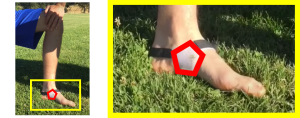This and the other 2 articles were recently published by Karl Dewazien, as part of his Soccer Evolution project.
The Instepper Mentoring Program is a cross-aged mentoring program where high school-aged (or college-aged) players mentor younger players. All people and organizations within a soccer community will benefit immensely when they are involved and support a mentoring program.
In Part 1: Falling in Love, I explain how mentors can help improve younger players’ FUNdamentals that will lead to greater individual and team successes. Hopefully, it will keep these younger players in the game longer. But as we adults know, falling in love is easy. Staying in love is the challenging part.
At these ages (roughly grades 9-12 … 15–18-year-olds … and college players), staying in love with soccer can be challenging. For example:
- Many competing interests (i.e., school, work, other sports, friendships/relationships, etc).
- Reality sets in. Playing college soccer or even representing your high school is no longer guaranteed.
- Injuries and burnout can take a physical and mental toll.
- It’s expensive (read “Part 3: Love Isn’t Cheap”).
If you are in high school and are still playing/loving soccer … Congratulation! Some of you may have already played 10+ years of organized soccer. You are obviously passionate about soccer. And for most of you, given the number of hours you have put into honing your craft, soccer is your most marketable skill.
If you have reached a point where you are thinking of ending your soccer love affair, don’t do it until you have been an Instepper Mentor to at least 1 younger player.
Instepper wants you to take your passion, experiences, and expertise and:
- Continue to improve on the field.
- Develop valuable skills off the field.
- Give back to the sport you love.
The Instepper Mentoring Program benefits are profound. Mentors:
- Improve as a player. There is truth in the saying, “Teaching is the best teacher”,
- Any player can be a Mentor! You don’t have to be the captain or one of the better players.
- Build confidence on and off the field.
- Develop important social/soft skills that will last you a lifetime.
- Stand out and stand apart on your college applications, resumes, and interviews.
- Earn money/credit for your services (help offset playing/registration costs).
- Give back to your school, Club, and/or local community.
- Learn the importance of and appreciation for the mentor/mentee relationship. It will come in handy for the rest or life.
If you can stay in love with soccer through high school, that love affair will likely last a lifetime. Soccer hopes you continue to play and remain a fan. And if/when you have kids, soccer hopes you pass your love for soccer onto your kids.











